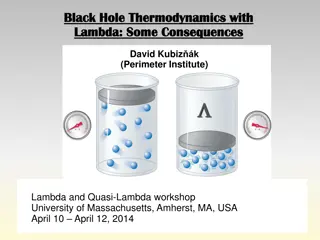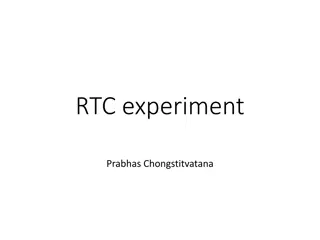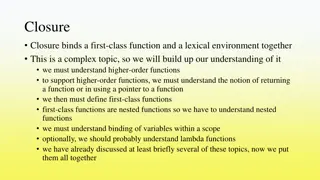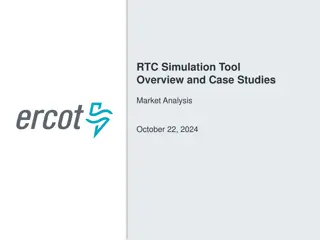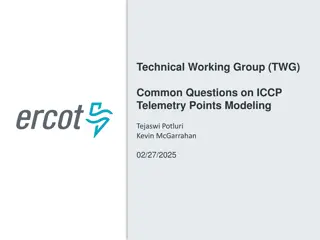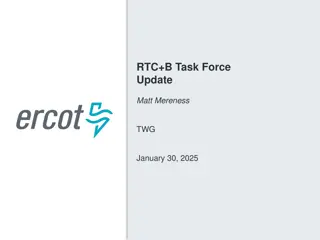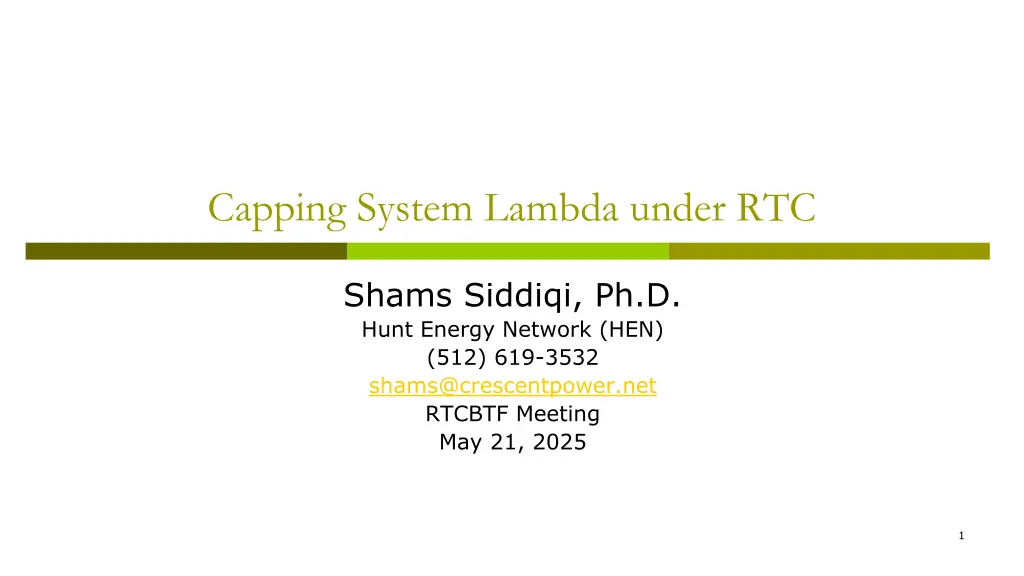
Why System Lambda is Capped Under RTC: Impacts and Solutions
Discover why System Lambda is capped under RTC, the impacts of such capping on market signals and pricing, and the urgent need for protocol changes to avoid distortion in energy pricing under ERCOT. Learn about the negative effects of capping System Lambda and the proposed solution to remove the price cap.
Download Presentation

Please find below an Image/Link to download the presentation.
The content on the website is provided AS IS for your information and personal use only. It may not be sold, licensed, or shared on other websites without obtaining consent from the author. If you encounter any issues during the download, it is possible that the publisher has removed the file from their server.
You are allowed to download the files provided on this website for personal or commercial use, subject to the condition that they are used lawfully. All files are the property of their respective owners.
The content on the website is provided AS IS for your information and personal use only. It may not be sold, licensed, or shared on other websites without obtaining consent from the author.
E N D
Presentation Transcript
Capping System Lambda under RTC Shams Siddiqi, Ph.D. Hunt Energy Network (HEN) (512) 619-3532 shams@crescentpower.net RTCBTF Meeting May 21, 2025 1
Background: Why is System Lambda capped under RTC? 6.5.7.3 Security Constrained Economic Dispatch (15)(d) The System Lambda used to determine LMPs from SCED Step 2 shall be capped at the effective VOLL. PUCT didn t Order price cap (only offer cap) why cap System Lambda under RTC? Current Protocols reduce ORDC Adder such that System Lambda (SL) plus ORDC Adder does not exceed VOLL (current VOLL is $5,000/MWh). Even though PUCT does not impose any price cap (e.g., on 2/19/25 LMPs were as high as $28,000/MWh), due to the ORDC Adder formulation, current SL does not exceed VOLL. ORDC Adder formulation is a poor man s approximation of AS Opportunity Cost under RTC However, actual RTC AS Opportunity Cost can be as high as $5,000/MWh (pre-NPRR1268) Thus, System Lambda under RTC can be as high as $7,000/MWh. Capping prices (SL)creates serious price distortion, inconsistent congestion pricing and uplift issues that are not currently present and should be avoided at all costs under RTC Since the RTC Protocols had been originally approved: VOLL study determined actual VOLL to be closer to $35,000/MWh; however, HCAP has been reduced to $5,000/MWh from $9,000/MWh (original SL cap); and Emergency Pricing Program (EPP) has been implemented that reduces HCAP to ECAP of $2,000/MWh for the greater of 24 hours or the entire EEA period when prices for 12 of the 24 hours are at HCAP. This greatly reduces the likelihood of prolonged scarcity prices. 2
Simple Example to Illustrate Impacts of Capping The following simple example shows the bad price signals, inconsistent congestion pricing and uplift created by ERCOT s proposed implementation of capping: Say, for an interval, System Lambda (SL)=$6,000/MWh, LMP1=$200/MWh, LMP2=$4000/MWh Capping SL to $5,000/MWh implies LMP1=-$250/MWh (due to floor) and LMP2=$3000/MWh Terrible Price Signal: instead of $200/MWh (which is a relative strong price), setting the price at -$250/MWh sends a bad price signal for operations and future resource investment and flexible load consumption decision. Inconsistent Congestion Pricing: Congestion (basis) between 1 and 2 is $3000-(- $250)=$3250 instead of the actual $4000-$200=$3800 without capping Unnecessary Uplift: If 10,000MW of Resources offered at $200/MWh at location 1, then ERCOT must pay a dispute-based emergency settlement of 10,000*(200-(- 250))=$4,500,000 an unhedgeablehuge uplift to Load in one hour that can be avoided Although SL exceeding VOLL happens infrequently, appropriate pricing during such scarcity events is critically important to the success of the Energy-Only Market As a general rule, any Price Capping reflects bad market design which is why the PUCT never Ordered price caps and why this SL price cap needs to be removed 3
Solution: Delete Protocol Language related to Capping PUCT didn t explicitly Order capping prices no-impact Urgent NPRR deleting capping language would require PUCT approval (allowing PUCT to decide if explicit price capping is desirable) VOLL when RTC Protocols were approved was $9,000/MWh so, SL would ve been capped at $9,000/MWh eliminating the SL cap implies SL could reach $7,000/MWh in the unlikely scenario where the marginal Resource offers AS at $0/MW during scarcity Post-NPRR1268, since ERCOT sheds firm Load to maintain PRC of 1,500MW, RRS ASDC may set AS Opportunity Cost. In unlikely scenario of $0/MW RRS offer, the highest SL would be about $9,000/MWh the VOLL cap when RTC was approved Scarcity prices limited to short duration since EPP kicks in reducing HCAP to $2,000/MWh Thus, average annual energy price impact of eliminating cap would likely be small With a more accurate VOLL being closer to $35,000/MWh and all the significant changes since RTC approval (HCAP reduction from $9,000/MWh to $5,000/MWh [$2,000/MWh for SCED under RTC] and EPP implementation), eliminating SL capping would ensure: Appropriate scarcity price signals essential for an Energy-Only Market Un-distorted Energy and Congestion price signals Avoidance of unnecessary and potentially large Uplift to Load 4



